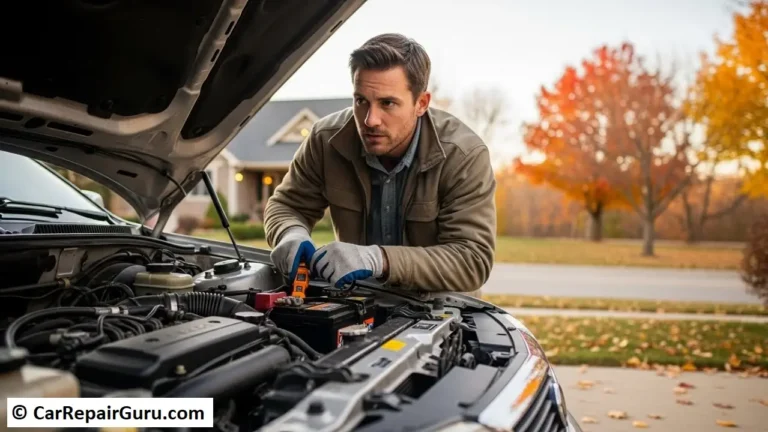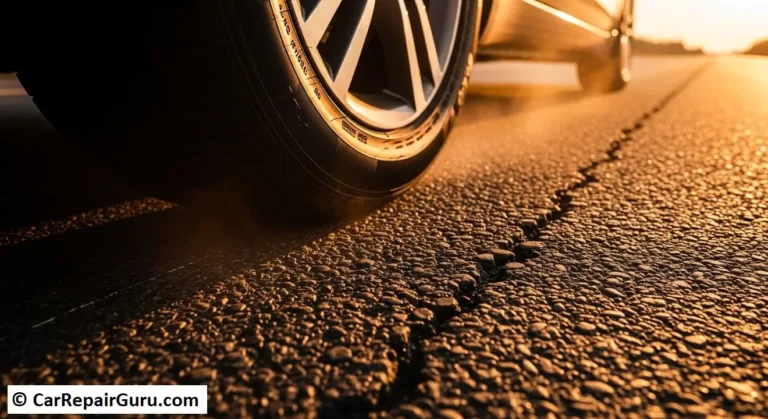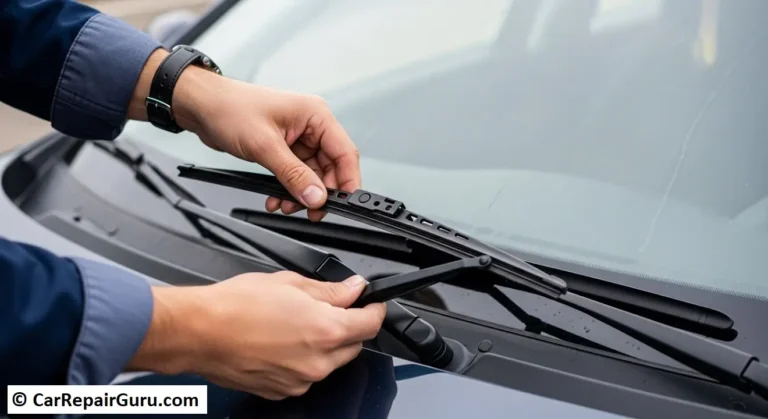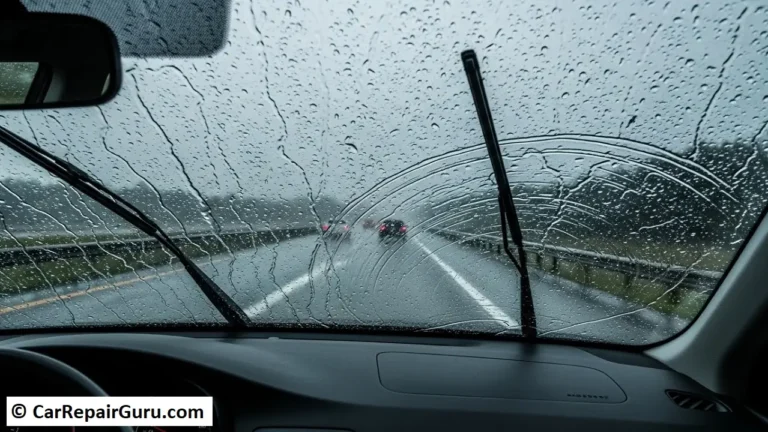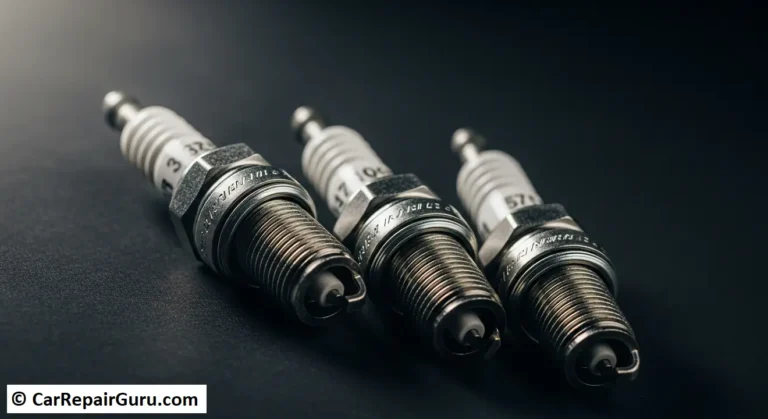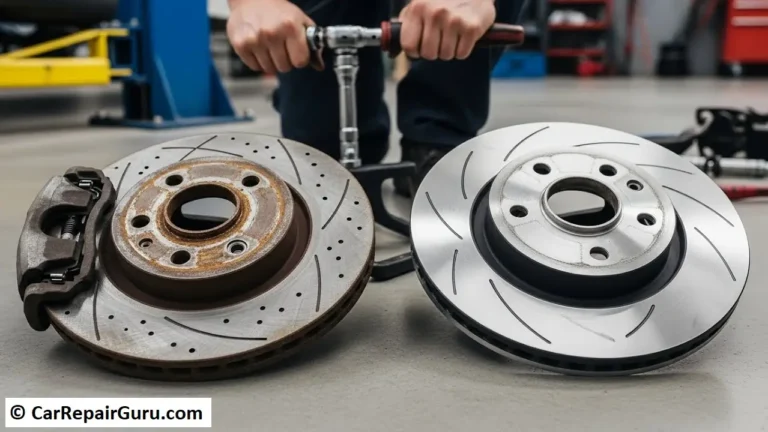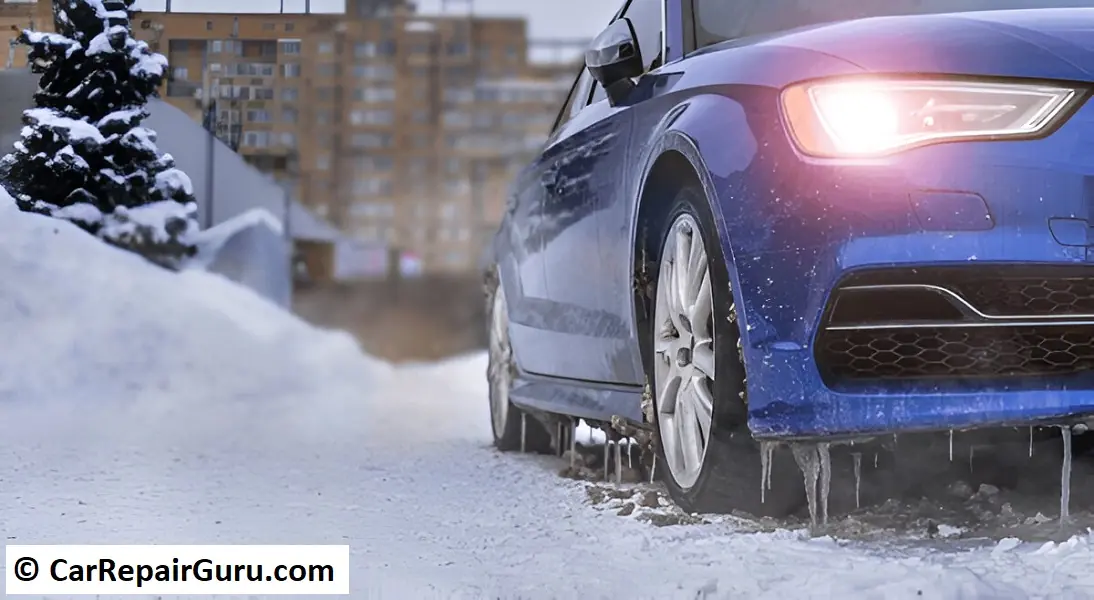
Weather isn’t just something you check before heading out — it can be one of the biggest enemies your car faces every day. From scorching summer heat to freezing winter mornings, weather-related car issues can sneak up fast and cause real damage if you’re not prepared. Whether it’s a battery that refuses to start in the cold, brakes that slip in the rain, or an engine that overheats during a heatwave, extreme conditions take a toll on your vehicle’s most essential systems.
The good news? Most of these issues are preventable with smart, seasonal maintenance. Taking a little time each season to inspect and care for your car can save you from costly repairs, dangerous breakdowns, and unexpected wear and tear.
In this guide, we’ll walk through how different weather conditions — rain, snow, heat, and cold — impact your vehicle, and what you can do to protect it. You’ll learn practical tips, checklists, and expert advice to keep your car running smoothly no matter what Mother Nature throws your way. Let’s get into it.
Why Weather-Related Car Issues Shouldn’t Be Ignored
Weather doesn’t just affect how you drive — it directly impacts how your car performs. Ignoring weather-related car issues might not seem like a big deal at first, but over time, the consequences can be serious, even dangerous.
Let’s start with winter, when dropping temperatures can significantly reduce your car’s battery capacity. Cold weather slows down the chemical reactions inside your battery, making it harder to start your engine — especially first thing in the morning. If your battery is old or weak, it might quit on you entirely.
Then there’s summer, when extreme heat can lead to engine overheating. When your cooling system isn’t in top shape — low coolant, a faulty thermostat, or a struggling radiator — your engine could be at risk of permanent damage. And don’t forget about your car’s interior and paint job; high temps and UV rays can cause fading, cracking, and warping if you’re not careful.
Rainy seasons pose their own risks. Wet roads reduce traction, and if your brake system isn’t in good condition, you may experience longer stopping distances or brake fading. Moisture can also corrode components over time, especially if you live in an area where roads are treated with salt.
Lastly, tire pressure fluctuates with the temperature — rising in the heat and dropping in the cold. This affects both your fuel economy and how your tires grip the road, potentially increasing the risk of a blowout or a skid.
Understanding how weather affects car performance is key to protecting your investment. With the right approach to seasonal auto care, you can avoid many of these problems altogether. By learning the signs of weather-related car damage early, you stay ahead of costly repairs and keep your car — and yourself — safe year-round.
Summer Car Problems and How to Fix Them
Summer might feel like a carefree time for road trips and weekend getaways, but high temperatures can be brutal on your car. Heat affects everything from your engine to your tires, and if you’re not paying attention, it can lead to serious — and expensive — weather-related car issues.
Let’s start under the hood. Your engine cooling system works extra hard in the summer to keep things from overheating. If your coolant levels are low or if there’s an issue with the radiator, thermostat, or water pump, you might end up on the side of the road with steam pouring from your engine. Engine overheating in summer isn’t just inconvenient — it can cause long-term damage like warped cylinder heads or blown gaskets.
Then there’s tire pressure, which rises as the temperature climbs. Hot air expands inside the tires, and if you’re not regularly checking and adjusting your pressure, it can lead to overinflation and even tire blowouts on the highway. It’s a good habit to check your tire pressure at least once a week during hot weather — and don’t forget the spare.
The sun also takes a toll on your car’s appearance and interior. Without protection, UV rays can cause your dashboard to crack, your upholstery to fade, and your steering wheel to feel like a stovetop. For long-term car paint protection from the sun, consider waxing your vehicle, using a paint sealant, or parking in shaded areas or under a car cover whenever possible.
If you’re wondering how to keep your car cool in summer, start with simple steps: use windshield sunshades, tint your windows (if legal in your area), and don’t forget to check your air conditioning system for leaks or low refrigerant. A little attention now can keep your summer drives much more comfortable.
One of the best car maintenance tips for hot weather is to schedule a seasonal check-up before the heat peaks. A quick inspection of your battery, fluids, tires, and cooling system can save you a whole lot of trouble down the road.
To sum it up: take steps to protect your car from heat damage, and you’ll not only extend the life of your vehicle — you’ll also stay safer and more comfortable during those hot summer drives.
Rainy Season Car Care Tips

Rainy days might be refreshing, but for your car, they bring a whole new set of challenges. From slick roads to hidden rust, moisture is one of the most common culprits behind long-term weather-related car issues. If you want to stay safe and avoid costly repairs, it’s essential to know how to care for your car during the rainy season.
Start with your tires. When roads are wet, proper tire tread is your first line of defense against hydroplaning. Bald or worn-out tires can lose grip easily, making braking and turning more dangerous. Check your tread depth with a penny or tread gauge, and don’t forget to maintain the right tire pressure — wet, cold roads can cause it to drop, affecting traction.
Next up: windshield wipers. They might seem like a small detail, but when visibility drops, they become one of the most important safety tools you have. Replace them at the first sign of streaking or skipping. Poor wiper performance can easily turn a manageable rainstorm into a visibility nightmare.
→ Tip: Always check the wiper blades and washer fluid before a heavy downpour.
Another must-do during the rainy season is inspecting your brake system. Rain doesn’t just make roads slippery — it can also cause brake fading, especially if your brake pads or rotors are worn. Moisture and mud can also get into components like brake calipers and cause corrosion over time. Schedule a brake check if you notice squeaking, reduced stopping power, or unusual vibrations.
Then there’s the risk of rust and corrosion, especially on your car’s underbody. When rainwater mixes with road grime and salt, it can cling to the bottom of your vehicle and eat away at the metal. Undercarriage protection, like undercoating sprays or frequent washes, can go a long way in preventing this hidden damage.
→ Use of: rust prevention for vehicles.
Driving during heavy rain also requires a change in mindset. Go slower, leave more space between vehicles, and avoid sudden stops or sharp turns. Safe driving in the rain isn’t just about technique — it’s about being aware of how your car handles differently in wet conditions.
Bottom line? Rainy weather car safety starts with preparation. Don’t wait until your brakes slip or your visibility disappears. A few smart checks can keep you dry, safe, and confident, no matter how hard it pours.
Winter Car Issues and Essential Fixes
Winter is one of the toughest seasons on your car — freezing temperatures, icy roads, and snow buildup all team up to create a perfect storm of weather-related car issues. Whether it’s early morning battery trouble or the slow response of a cold engine, neglecting winter car care can leave you stranded when you least expect it. Let’s dive into the most common problems and how to tackle them head-on.
1. Battery Failure in Cold Weather
One of the most frequent cold weather car problems is a dead battery. Cold temperatures slow down chemical reactions inside the battery, making it harder to deliver the charge needed to start the engine. If your battery is more than three years old or struggles to turn over in the morning, it’s time for a voltage test. Consider switching to a battery designed for low temperatures, and always keep jumper cables — or a portable jump starter — in your trunk.
→ Tip: Park your car in a garage overnight when possible to reduce battery strain.
2. Thickened Engine Oil and Frozen Fluids
Cold weather causes engine oil to thicken, making it harder to circulate and protect your engine’s components during startup. That’s why switching to a winter-grade oil is essential for seasonal auto care. Also, keep an eye on your antifreeze levels — it protects your engine from freezing and prevents metal corrosion. Windshield washer fluid can also freeze, so make sure it’s rated for sub-zero temperatures.
→ Use of: antifreeze for winter, fluid check before winter
3. Frozen Doors and Locks
Moisture can freeze overnight and lock your car doors shut. A silicone-based lubricant on your door seals can prevent sticking, while lock de-icer or rubbing alcohol can help in a pinch. Don’t try to force doors open — that could damage the seals or handles.
4. Reduced Tire Traction
In cold weather, tire rubber hardens, reducing grip — especially on snow or ice. All-season tires are okay for light winters, but winter tires are specially designed for better flexibility and traction in freezing conditions.
→ Do I need winter tires or all-season? If you live in a place that regularly dips below 7°C (45°F), the answer is yes — winter tires offer significantly improved braking and handling.
5. Brake and Suspension Wear
Snow, ice, and salt can wreak havoc on your brake system and suspension. Brake lines can corrode, while suspension parts like bushings and joints wear out faster under the stress of potholes and icy roads. Getting these checked mid-winter can prevent small problems from turning into big ones.
6. Must-Have Winter Emergency Kit
Every driver should carry a car survival kit for winter, including items like:
- A snow brush and ice scraper
- Flashlight and extra batteries
- Jumper cables
- Blanket and warm clothes
- Snacks and water
- Small shovel and sand or kitty litter (for traction)
Proper vehicle winterization steps can prevent most cold-weather breakdowns. Think of it as insurance — a little effort now can save you hours of stress and hundreds in repair costs later.
So if you’re wondering how to prepare your car for snow, start with these basics. Stay ahead of winter’s worst surprises and keep your car running safely and smoothly, even on the coldest days.
Spring Car Maintenance Checklist
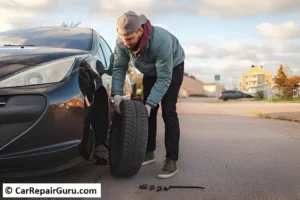
Spring is the season of renewal — and your car needs a fresh start just as much as you do. After months of battling winter cold, road salt, and icy conditions, your vehicle could use some care. Performing seasonal maintenance now helps undo winter’s damage and gets you ready for the warmer months ahead. Here’s your go-to spring car maintenance checklist to stay ahead of any weather-related car issues.
1. Inspect and Rotate Tires
Spring is a great time to check your tire tread and pressure. Cold winter air can leave tires underinflated, while potholes and ice can cause uneven wear. Rotate your tires to promote even wear and extend their lifespan. If you used winter tires, swap them out for all-season ones as temperatures warm up.
→ Bonus Tip: Check your spare tire too — spring’s a common season for road trips!
2. Check Brakes and Suspension
Winter driving takes a toll on your brake system and suspension. If you notice squeaking, grinding, or a spongy pedal, have your brakes inspected immediately. Also, listen for any strange noises or bumps that could signal suspension damage from icy roads or potholes.
3. Wash and Protect Your Car’s Exterior
Road salt and grime can lead to corrosion if not cleaned off properly. Give your car a full wash — including the undercarriage — and apply a fresh coat of wax for car paint protection from sun and spring rain. It’s not just about looks; it’s about preventing rust and keeping your vehicle in top shape.
4. Top Off Fluids and Replace Filters
Check your oil, coolant, windshield washer fluid, and brake fluid levels. Spring is also the perfect time to replace your cabin air filter — pollen and dust are on the rise, and you’ll want fresh air inside as temperatures increase.
By following this spring auto care routine, you’ll keep your vehicle running smoothly and help avoid surprises later in the year. A little effort now means peace of mind all season long.
When to Call a Mechanic
While DIY car care can save time and money, there are times when calling a professional is the smartest move — especially when it comes to weather-related car issues. Knowing when to step back and let a mechanic take over can prevent small problems from turning into major repairs.
One clear sign it’s time for expert help is if your engine keeps overheating, even after checking coolant levels and inspecting your radiator. Persistent overheating in summer can point to deeper issues like a faulty thermostat, broken water pump, or a clogged radiator that only a trained technician can properly diagnose and repair.
Another red flag? Brakes that feel weak or spongy, especially after heavy rain or winter driving. Brake problems aren’t something to guess about — your safety depends on stopping power.
If you notice unusual noises, like grinding, knocking, or high-pitched squeals, don’t wait to “see if it goes away.” These sounds often indicate serious wear in critical components like your suspension, transmission, or engine mounts.
And during winter, if your car consistently struggles to start or your battery keeps dying, a mechanic can test your electrical system and battery health to find the root cause.
Bottom line: Trust your instincts. If something feels off — whether it’s your brakes, your engine, or just the way your car drives — don’t ignore it. Quick action and a professional eye can save you money, time, and stress.
Conclusion
Weather changes can take a real toll on your vehicle — but with the right seasonal maintenance, you can stay ahead of costly repairs and drive with confidence year-round. From heatwaves to icy roads, knowing how to handle weather-related car issues is key to keeping your car safe, reliable, and performing at its best. Stay proactive, stay prepared — and let every season roll in worry-free.
FAQ
Q1: What are the most common weather-related car issues?
A: Some of the most common weather-related car issues include battery failures in cold weather, overheating in the summer, tire blowouts due to heat, and brake wear from rainy conditions.
Q2: How do I prevent my car from rusting in wet weather?
A: Apply anti-rust coatings, wash the undercarriage regularly, and avoid parking in damp areas for extended periods. Undercarriage protection is key.
Q3: Do I really need winter tires?
A: Yes, if you live in areas with snow or freezing temps. Winter tires provide better grip and safety than all-season tires in icy or snowy conditions.
Q4: How does heat damage my car?
A: Heat causes fluids to evaporate, tire pressure to rise, and can damage your car’s interior and paint. Regular coolant checks and using sun protection help mitigate this.
Q5: Can I check my battery myself in cold weather?
A: You can test battery voltage with a multimeter, but for accurate diagnostics, a mechanic can perform a load test and inspect for corrosion or fluid loss.
